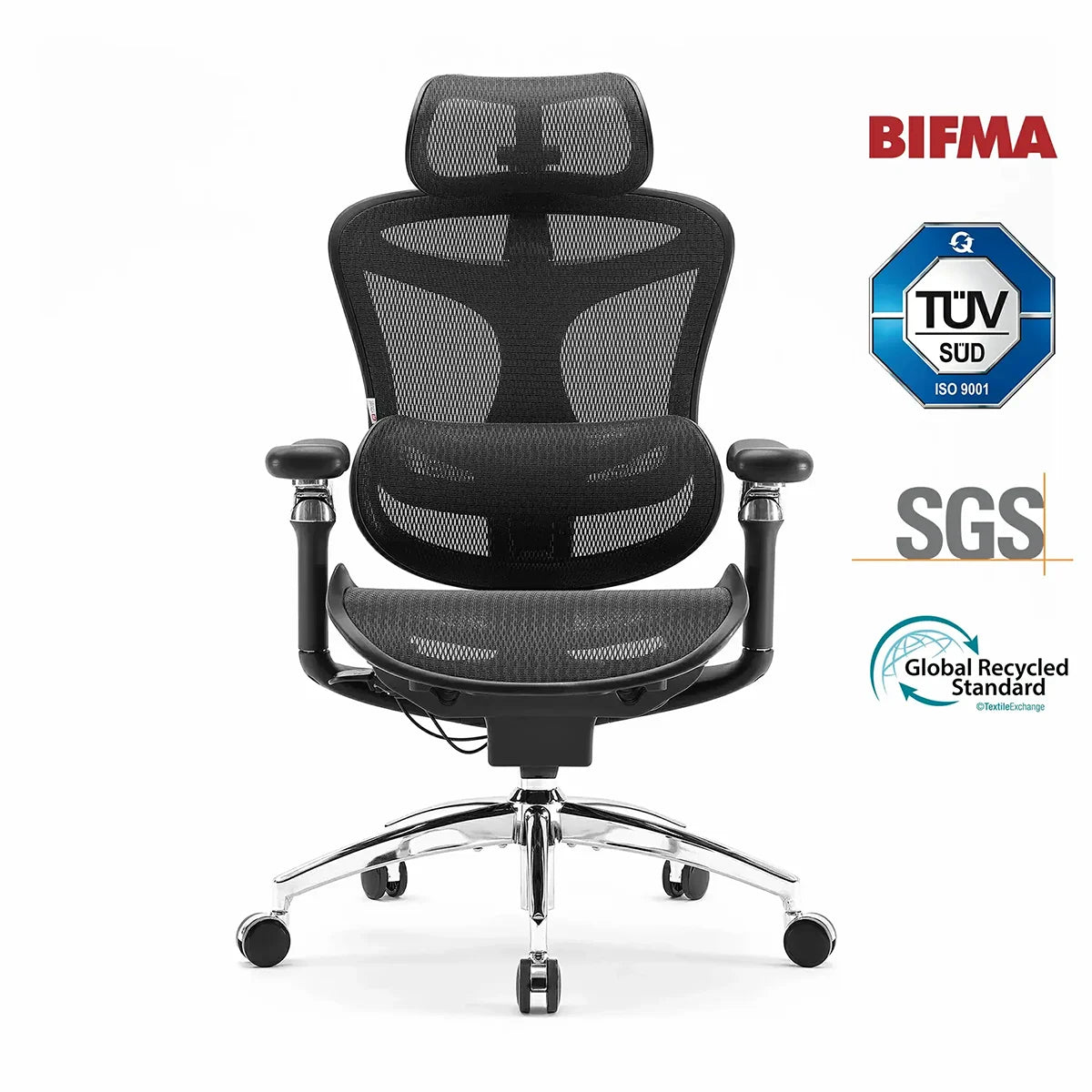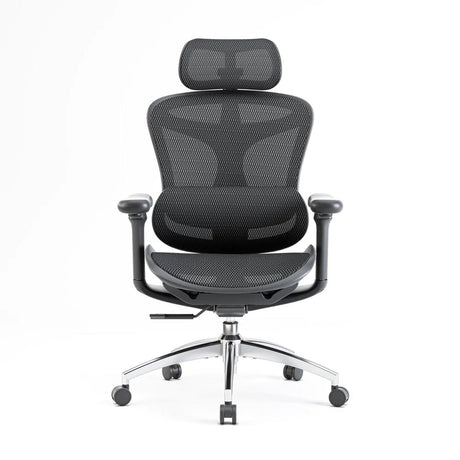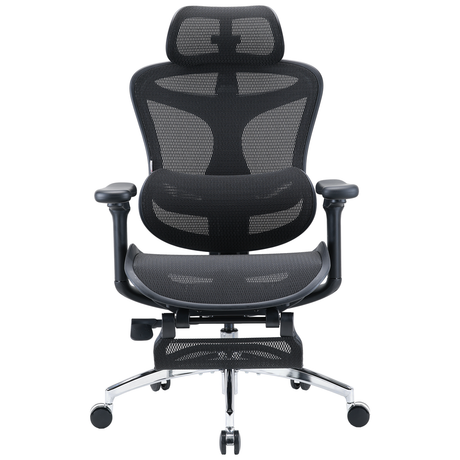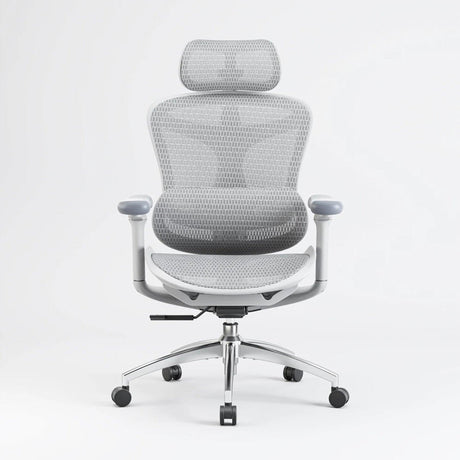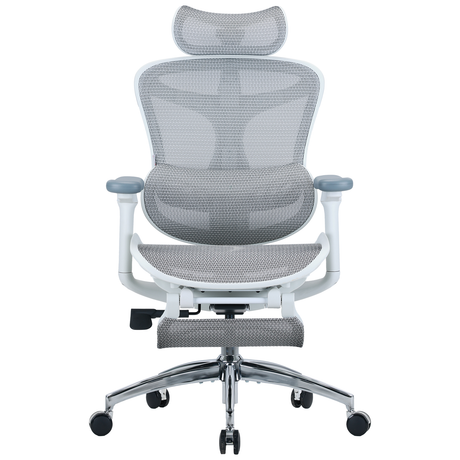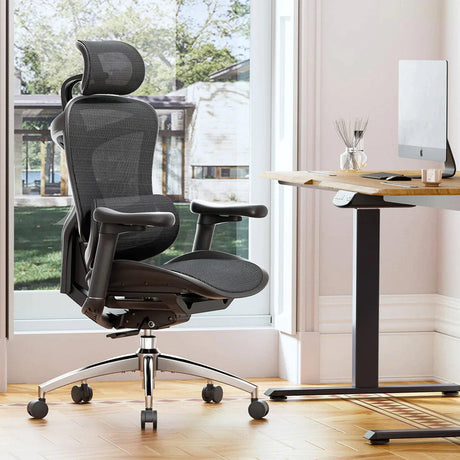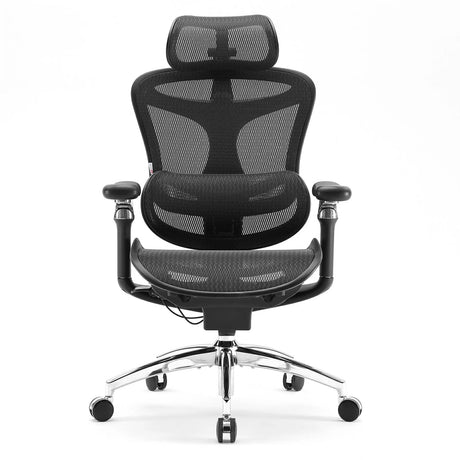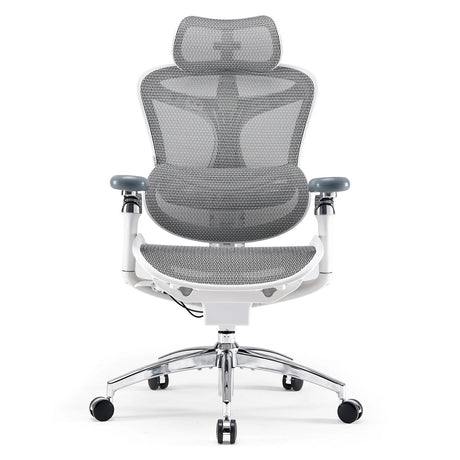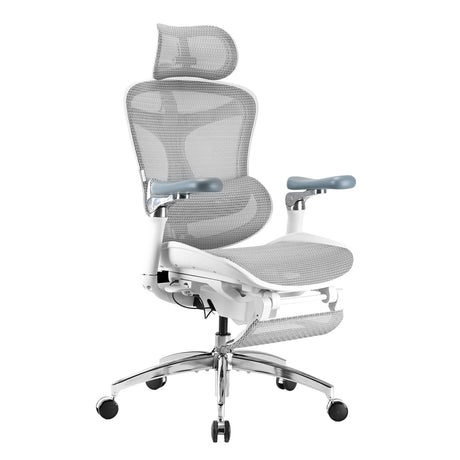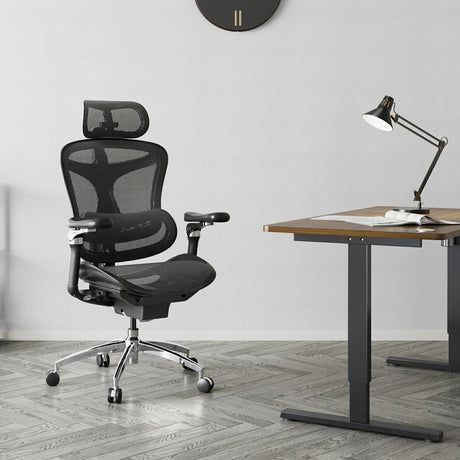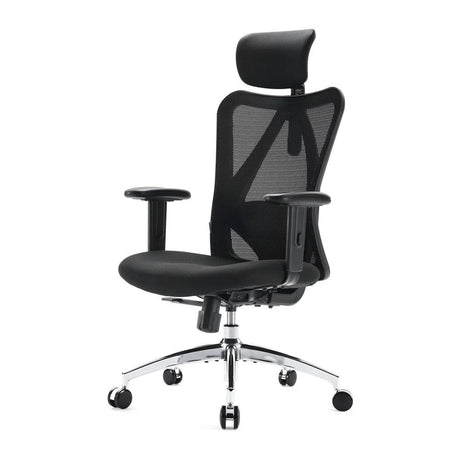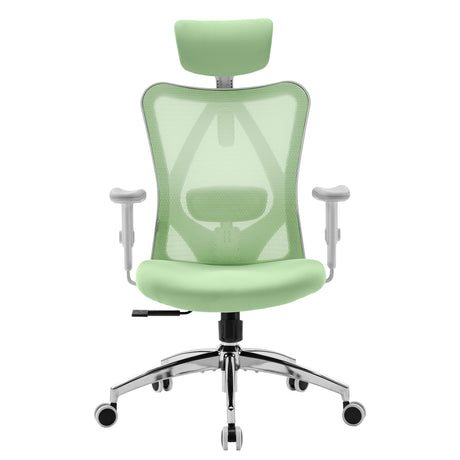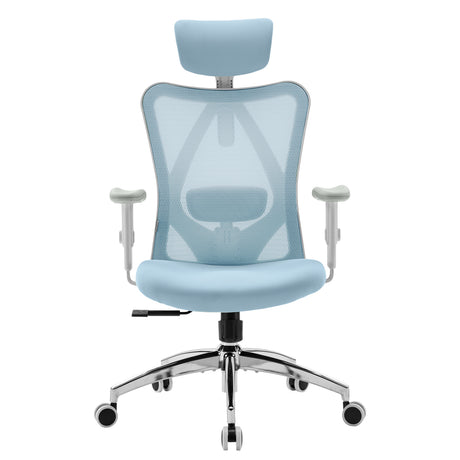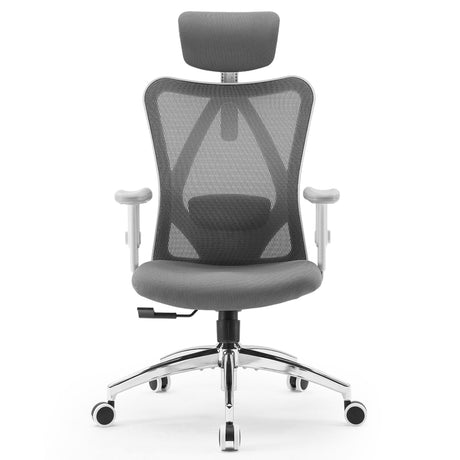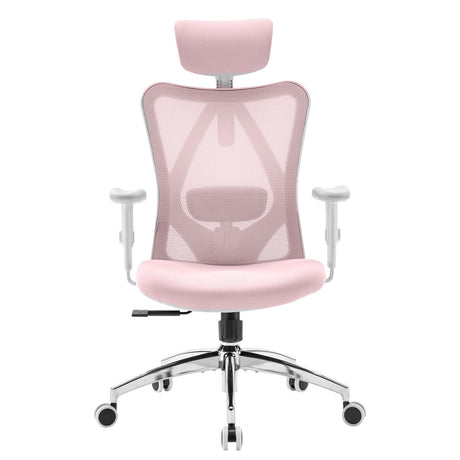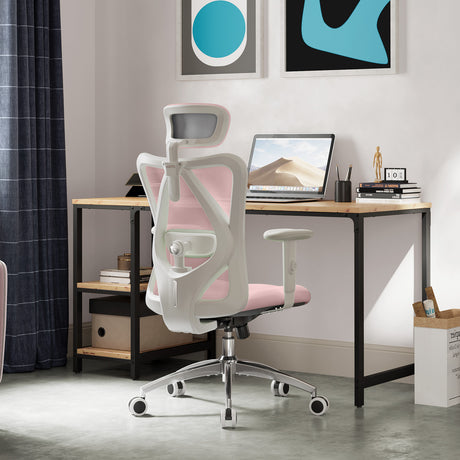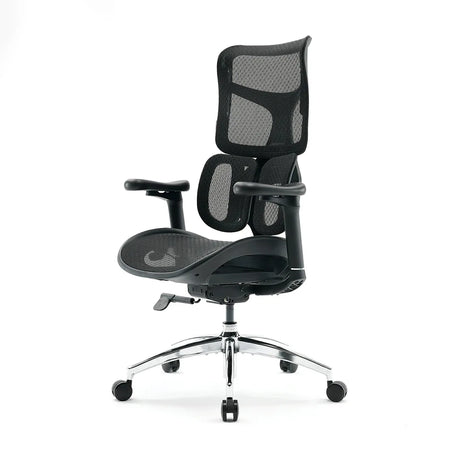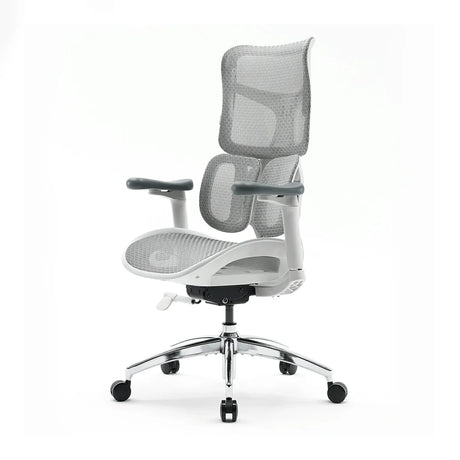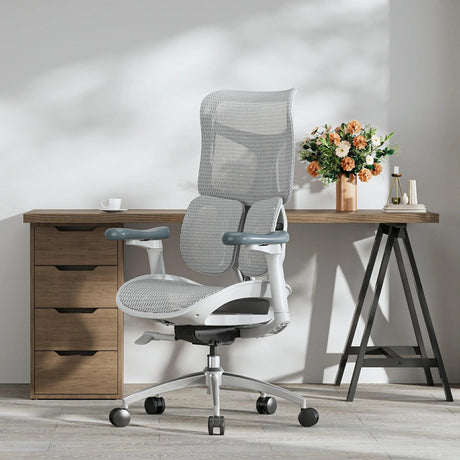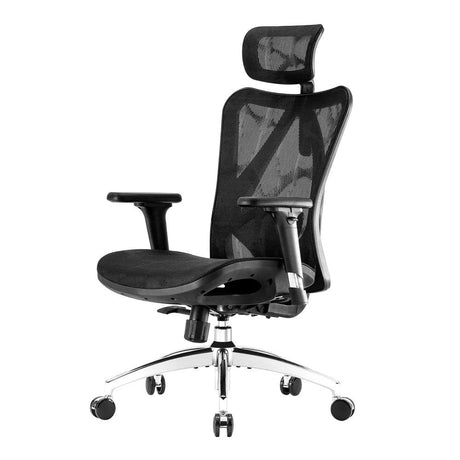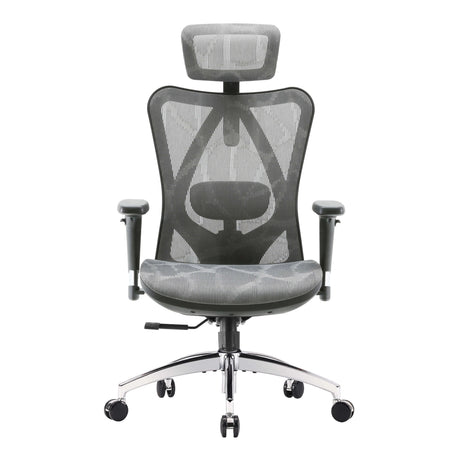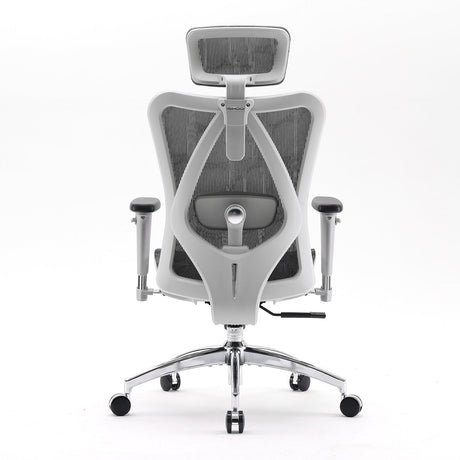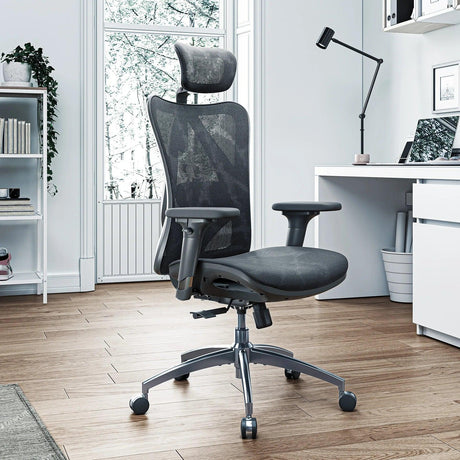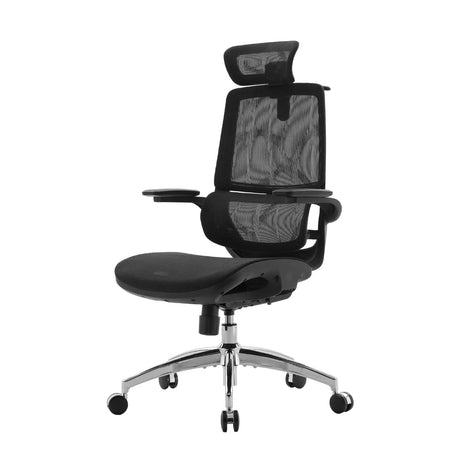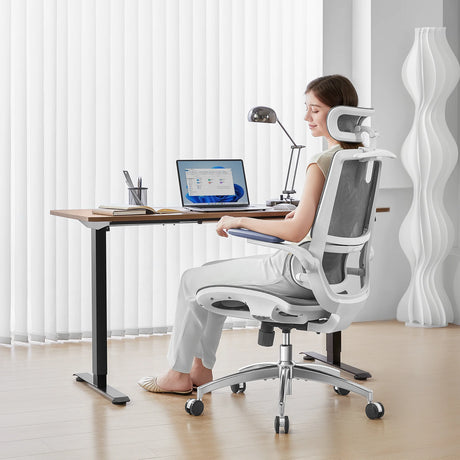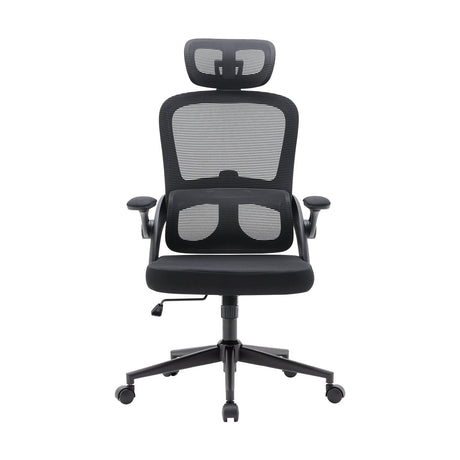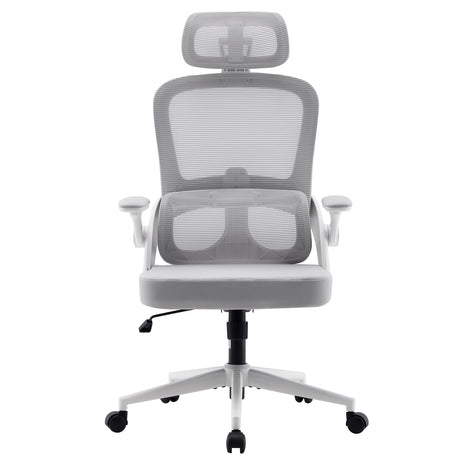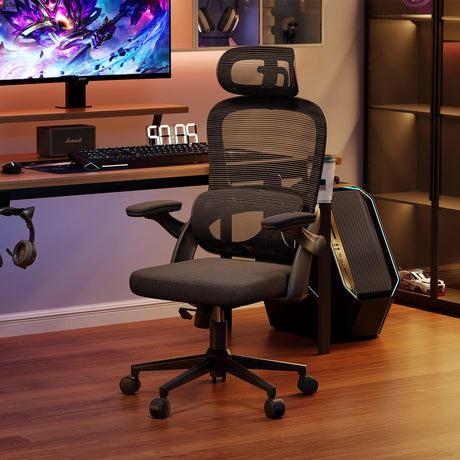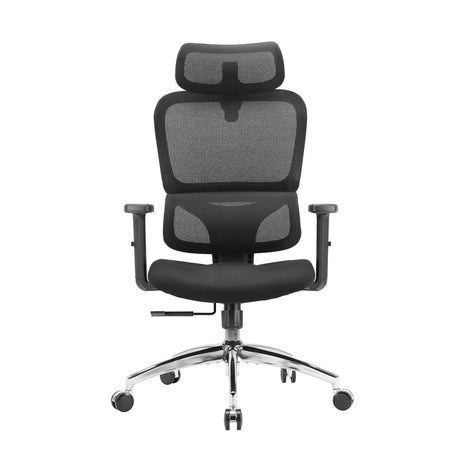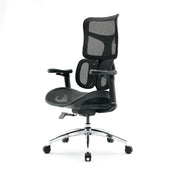In the modern professional landscape, every choice we make about our workspace is no longer just about comfort and efficiency—it is a reflection of our values. For the eco-conscious professional, the desk chair, once a simple matter of personal preference, has evolved into a critical decision point that weighs personal well-being against planetary health. We spend, on average, over 1,700 hours a year in our office chairs, making them one of the most consequential—and often most environmentally impactful—pieces of furniture in our lives.
The era of choosing between ergonomic excellence and ethical sourcing is over. Today, the leading furniture designers are pioneering a new standard: Sustainable Comfort. This philosophy recognizes that true comfort extends beyond a cushioned seat and adjustable armrests; it includes the peace of mind that comes from knowing your essential office equipment minimizes its ecological footprint. It is about investing in furniture built for extreme longevity, designed with responsible, low-impact materials, and manufactured with minimal waste and high social responsibility.
This comprehensive guide is crafted for the discerning professional, the architect of a greener office, and the executive who understands that corporate social responsibility begins at their own desk. We will explore what truly makes an ergonomic office chair "green," delve into the critical certifications to look for, and present a deep-dive on a prime example of ergonomic and ethical design commitment: the robust and adaptive Sihoo Doro C300 Pro. By the end of this article, you will be equipped to make an informed, sustainable investment that supports your career, your health, and the planet for years to come.
Decoding 'Green' – A Professional’s Guide to Sustainable Furniture Metrics
The term "sustainable" is frequently and often vaguely used, a common casualty of "greenwashing." In the context of commercial office furniture, genuine sustainability relies on a clear, verifiable set of criteria that assess the product's environmental footprint across its entire lifecycle—from raw material extraction to final disposal.
1.1 The Materials Matrix: From Cradle to Gate
The single most significant factor in a chair's sustainability profile is its material composition. Professionals must look beyond vague claims and demand verifiable data.
-
Recycled Content: The Prime Indicator: Look for high percentages of post-consumer (PCR) and post-industrial (PIR) recycled materials. The use of recycled aluminum, for example, is a powerhouse of energy conservation—it requires up to 95% less energy to process than virgin aluminum. Similarly, the increasing use of recycled polypropylene and polyethylene in plastic components dramatically reduces the demand for new, petroleum-based plastics.
-
Actionable Metric: Target chairs with a minimum of 30% total recycled content, prioritizing those that clearly separate PCR (from consumer waste) and PIR (from manufacturing waste).
-
-
Low-Impact or Renewable Resources: The trend is shifting toward innovative, high-performance materials that are less reliant on finite resources. This includes:
-
Bio-Based Plastics: Polymers derived from sources like corn starch or sugarcane, which sequester carbon during growth.
-
Certified Wood: Any wood components must carry the FSC (Forest Stewardship Council) certification, guaranteeing that the material comes from responsibly managed forests that preserve biodiversity.
-
Natural Textiles: Materials like certified organic cotton, wool, and hemp, processed without harsh chemicals, offer durable, breathable, and biodegradable options.
-
-
Toxicology and Low-VOCs: Volatile Organic Compounds (VOCs) are gases emitted from many manufactured products, contributing to poor indoor air quality and, at scale, environmental pollution. The most sustainable chairs use:
-
Powder Coatings: A solvent-free paint applied electrostatically, which releases virtually zero VOCs.
-
Water-Based Adhesives and Finishes: Non-toxic alternatives to solvent-based glues.
-
1.2 Durability and Longevity: The True Sustainability Test
Ultimately, the most eco-friendly office chair is the one you don’t have to replace prematurely. A chair’s durability directly impacts its overall resource consumption.
-
Commercial-Grade Engineering: Durability is not a "green" feature in the typical sense, but it is the cornerstone of sustainable consumption. A chair engineered to commercial standards, such as those certified by BIFMA (Business and Institutional Furniture Manufacturers Association), is designed to withstand decades of heavy use, exponentially reducing its lifetime environmental footprint.
-
The Professional View: A chair that lasts 15 years instead of 5 years is inherently three times more sustainable, regardless of its initial material profile.
-
1.3 Manufacturing, Supply Chain Ethics, and Circularity
Sustainability scrutiny must extend to the manufacturer's operational practices and the product's end-of-life plan.
-
Ethical Manufacturing: Look for manufacturers committed to the ISO 14001 standard (Environmental Management System), indicating a formal system to continually improve environmental performance. This includes minimizing waste, conserving water, and striving for renewable energy use in production.
-
Design for Disassembly (DfD): A chair designed for the circular economy must be easy to take apart. This means fewer co-mingled materials, fewer unique fasteners, and parts that can be easily separated for high-quality recycling or re-use.
-
Take-Back Programs: The gold standard is a manufacturer that offers to reclaim and refurbish or responsibly recycle its product at the end of its useful life, officially closing the consumption loop.

The Green Certification Checklist for Professionals: Vetting the Claims
Certifications are the third-party assurances that distinguish genuine sustainable claims from mere greenwashing. Professionals should prioritize chairs that carry the following seals of approval.
| Certification/Standard | Focus Area | Professional Significance |
| BIFMA LEVEL | Comprehensive sustainability for the commercial furniture industry. | A multi-faceted, tiered ranking system (Levels 1, 2, or 3) covering materials, energy, human/ecosystem health, and social responsibility. LEVEL 3 is the top certification. |
| GREENGUARD (Gold) | Low chemical emissions (VOCs) for improved indoor air quality. | Essential for Health. Ensures the chair contributes minimally to air pollution, creating a healthier, less toxic environment. Gold is the stricter certification. |
| BIFMA/ANSI X5.1 & SGS | Safety, durability, and structural integrity. | Crucial for Longevity. This proves the chair meets commercial-grade resilience and is the best indicator of a long product lifecycle. (Sihoo C300 Pro is certified by BIFMA and SGS) |
| FSC (Forest Stewardship Council) | Responsible forest management for any wood components. | Guarantees any wood used comes from forests managed sustainably and ethically. |
| ISO 14001 | Environmental Management System (EMS). | Certifies the manufacturer has an effective system in place to continually reduce its environmental impact. |
Professional Insight: The BIFMA LEVEL standard is the most holistic metric. If a chair carries this, it has undergone a rigorous, third-party assessment of its entire sustainable supply chain.
Featured Solution – The Sihoo Doro C300 Pro: Where Ergonomics Ensures Longevity
While a chair's "green" credentials often focus on its raw material input, the most responsible purchasing decision is one that maximizes longevity, supports long-term user health, and is built to rigorous commercial standards. The Sihoo Doro C300 Pro exemplifies this principle, offering a chair engineered for exceptional durability and ergonomic performance—two critical pillars of Sustainable Comfort.
3.1 Engineered for Endurance: The Sustainable Investment
The C300 Pro’s commercial-grade certifications speak directly to its sustainability through durability and engineering excellence:
-
BIFMA and SGS Certified: These attest that the chair has passed rigorous, independent testing protocols for structural endurance, safety, and stability. For the eco-conscious buyer, this is the essential guarantee that the chair is an investment designed to withstand years of demanding professional use without failure, drastically reducing the environmental impact of early replacement.
-
300 lbs Weight Support: The robust construction required to reliably support up to 300 lbs signifies a heavy-duty, high-quality component build—less prone to mechanical failure and more likely to provide a decade or more of service.
3.2 A Deep Dive into Dynamic Comfort: The Sihoo C300 Pro's Adaptive Features
Superior ergonomics in a professional chair is an investment in human capital—reducing strain, preventing career-limiting injury, and boosting sustained concentration. The C300 Pro’s features are a masterclass in adaptive, continuous support.
-
Dynamic Lumbar Support: This advanced system automatically adjusts to the user’s spine curvature and shifts in posture, providing continuous, personalized back comfort without the need for constant, manual adjustments. For professionals spending eight or more hours at a desk, this translates to precise, effortless spinal support and a significantly reduced risk of lower back pain, a key factor in professional longevity.
-
Adaptive Design for Broad User Fit (5' to 6'3"): A chair that accommodates a wide range of body types is more sustainable. It ensures fewer chairs are needed for a diverse workforce, and the chair can be successfully reused or passed on without obsolescence, extending its usable lifecycle as an asset.
-
Spacious Cushion with Adjustable Seat Depth: The generous cushion enhances comfort and offers ample space, while the adjustable seat depth is critical for proper ergonomic alignment. This feature ensures the seat pan supports the thighs without pressing into the back of the knees, maintaining optimal circulation and reducing the risk of fatigue.
3.3 Unprecedented Versatility: The 6D Adjustable Armrests
The C300 Pro’s 6D Adjustable Armrests redefine versatile support, directly contributing to long-term musculoskeletal health and, therefore, professional productivity. This high degree of customization ensures the chair fits the user’s needs, not the other way around.
| Direction of Adjustment | Professional Benefit and Ergonomic Purpose |
| Up and Down | Align the forearms with the desk surface to maintain a neutral shoulder position and prevent upper body strain (RSI). |
| Back and Forth | Position the armrests close to the body for keying or further back for relaxed reading, thinking, or reclined use. |
| In and Out | Custom-fit the width to match the user's shoulder width, crucial for proper elbow support across different frames. |
| Rotated Inward/Outward | Provides essential, continuous support for the elbows and forearms during detailed tasks like mousing, typing, or using a tablet. |
| Linked Recline Experience | Maintains appropriate forearm support and angle even when the backrest is reclined, ensuring a continuous ergonomic line during breaks. |
This level of detail ensures that the chair supports the user in nearly any working or resting posture, making it a truly multi-functional tool designed for the dynamic, long-haul workday.
3.4 Effortless Controls and Practicality
-
Easy Controls with a Single Handle: The convenience of a single, strategically placed handle for major adjustments (height, depth, recline angle) simplifies the customization process. This encourages users to make the necessary adjustments regularly, ensuring they are consistently in the most personalized and ergonomic position.
-
Weight-Sensing Technology: This advanced feature provides a balanced, personalized recline experience without the need for manual tension adjustments, automatically adapting the recline resistance to the user's weight for a consistent and safe recline.
-
Breathable Mesh: The fully breathable, elastic, and soft mesh is a practical and low-maintenance feature. Unlike leather or high-density foam which can degrade, crack, or trap heat, durable mesh promotes ventilation and is inherently easy to clean, contributing to the chair’s overall longevity and comfort in diverse professional settings.
Conclusion on C300 Pro: The Sihoo Doro C300 Pro is a testament to the fact that best-in-class ergonomics and commercial-grade durability—backed by BIFMA and SGS—form the essential foundation for a truly sustainable office investment. A chair that is engineered to be comfortable and robust enough to last for a decade is inherently the most responsible and resource-efficient choice.
Sihoo Doro C300 Pro Ergonomic Chair
The Environmental and Financial ROI of Green Furniture
Moving beyond the initial purchase price, investing in sustainable and ergonomic seating yields significant, tangible returns for the individual professional and the wider business.
4.1 Health and Productivity ROI: Investing in Human Capital
-
Reduced Absenteeism and Presenteeism: The CDC and numerous studies link poor ergonomics directly to musculoskeletal disorders (MSDs), the most common workplace injury. A high-quality chair minimizes back, neck, and shoulder pain, reducing sick days (absenteeism) and ensuring a professional can maintain full focus while working (mitigating presenteeism—being physically present but mentally distracted by pain).
-
Enhanced Focus and Cognitive Output: A comfortable, supportive, and non-toxic (low-VOC) environment is conducive to deep work. When a professional isn’t subconsciously shifting or fidgeting due to physical discomfort or suffering from VOC-related headaches, their cognitive load is freed up for complex tasks, directly boosting productivity.
-
Better Air Quality: Choosing GREENGUARD Gold certified chairs reduces the emission of harmful VOCs, drastically improving indoor air quality. This translates to fewer headaches, reduced eye and throat irritation, and better overall respiratory health—a profound, long-term return on well-being.
The Evolving Landscape: Innovation and the Future of Sustainable Seating
The commitment to a greener office is not a static decision; it is an ongoing process driven by material science and innovative design principles. Professionals can look forward to—and demand—further advancements in the following areas:
5.1 Advanced Material Science: Beyond Standard Recycled Content
-
Recycled Ocean-Bound Plastics: Leading furniture makers are partnering with global clean-up initiatives to divert plastic waste from waterways and coastlines, converting this high-impact material into durable chair components. This offers a negative-impact solution.
-
3D Knit and Weave Technologies: Replacing traditional cut-and-sew upholstery with 3D knitting drastically reduces textile waste to nearly zero. The mesh on chairs like the C300 Pro is an example of this textile efficiency, prioritizing a single, durable material.
-
Bio-Based Foams and Upholstery: Innovative foams derived from sustainable resources (like soy or caster beans) are replacing petroleum-based polyurethane foam. These newer materials offer the same high-performance cushioning with a significantly smaller carbon footprint.
5.2 New Economic Models: The Shift to Servitization
-
Product as a Service (PaaS): The most radical shift is the rise of subscription- or lease-based models. Here, the company retains ownership of the chair. This model fully aligns the manufacturer’s incentive with the customer’s desire for longevity and repairability. Since the chair will eventually be returned, the manufacturer is incentivized to design it for maximum durability, ease of repair, and 100% material recovery. This truly closes the consumption loop and defines the pinnacle of the circular economy for furniture.
The choice of an office chair is a microcosm of a professional’s broader commitment to a sustainable future. By prioritizing durability, rigorous ergonomic support, and verifiable third-party sustainability certifications, the eco-conscious professional ensures their workspace is not only conducive to their own success but also aligned with a greater ethical responsibility. Investing in Sustainable Comfort is simply good business, good health, and good stewardship.
Frequently Asked Questions (FAQs) on Sustainable Office Chairs
Q1: Is a sustainable office chair always more expensive than a standard one?
A: The initial cost of a high-quality, certified sustainable chair can be higher due to the use of durable, recycled materials and ethical manufacturing processes. However, when viewed through the lens of Total Cost of Ownership (TCO), sustainable chairs are often more cost-effective. They are built for longevity (10+ years), backed by superior warranties, and reduce the recurring costs of replacement and disposal, offering a better long-term ROI.
Q2: What is the single most important certification to look for when evaluating an office chair’s true sustainability?
A: While multiple certifications are vital, the BIFMA LEVEL standard (specifically LEVEL 3) is arguably the most comprehensive and challenging to achieve. It evaluates a chair across four key areas: materials, energy/atmosphere, human and ecosystem health, and social responsibility. For an immediate health benefit, GREENGUARD Gold certification is non-negotiable, as it ensures the lowest levels of chemical emissions (VOCs).
Q3: Does the Sihoo Doro C300 Pro meet major sustainability standards?
A: The Sihoo C300 Pro meets the crucial BIFMA and SGS quality and durability standards. These commercial-grade certifications guarantee its structural integrity and longevity, a key component of sustainability through endurance. Professionals should also inquire with the vendor about the chair's specific recycled content percentage and any GREENGUARD or LEVEL certifications for its materials and manufacturing processes to complete the green assessment. Its emphasis on durability makes it an inherently responsible investment.
Q4: How does a chair’s ergonomic design contribute to its sustainability?
A: Ergonomics contributes to sustainability in two significant ways:
-
Longevity of the Product: A highly adjustable, adaptive chair (like the C300 Pro with its dynamic support and 6D armrests) fits a wider range of users comfortably and for a longer period. This broad adaptability increases its asset life, making it a more sustainable and reusable purchase.
-
Longevity of the User: Superior ergonomic support prevents injury and chronic pain, contributing to the health and sustained productivity of the professional—the most valuable resource of any business.
Q5: What should I do with my old office chair if I buy a sustainable replacement?
A: Do not send it to a landfill. The options, in order of preference, are:
-
Donate/Reuse: If it’s in good condition, donate it to a local non-profit, school, or community organization to extend its usable life.
-
Recycle: If it's broken, contact local commercial recyclers. High-quality chairs often contain large amounts of highly valuable, recyclable materials like aluminum and steel that should be recovered.
-
Manufacturer Take-Back: Check if the manufacturer of your new chair offers a take-back program for old furniture, which guarantees the materials will be handled responsibly.
Q6: Why is 'breathable mesh' a sustainable feature for a professional chair?
A: High-quality mesh (like that used in the C300 Pro) contributes to sustainability because it is extremely durable, easy to clean, and promotes constant air circulation. This durability minimizes the need for maintenance or replacement of fabric/cushioning and is often made of a single material type (e.g., woven polyester), making it much easier to recycle than multi-layered or glued components like traditional cushioned upholstery.

